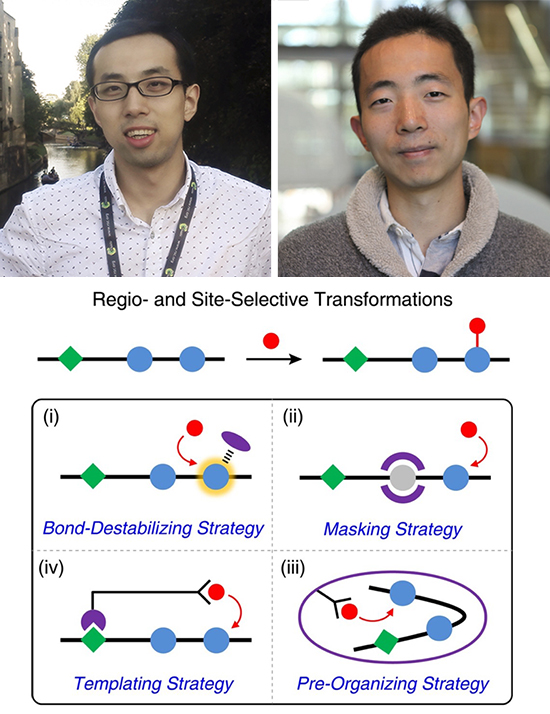A review article entitled “Weak-Bonding Strategies for Achieving Regio- and Site-Selective Transformations” has been published in Chem by Postdoctoral Fellows Yang Jiao and Aspen Chen.
Weak bonding interactions, including dynamic covalent and noncovalent bonding interactions, are ubiquitous in many molecular recognition and self-assembly processes in biology. The use of synergistic weak bonding interactions by enzymes in carrying out highly challenging regio- and site-selective transformations on molecules is a feat that took nature billions of years to accomplish. This remarkable mastery of molecular editing has long stimulated chemists to devise weak bonding strategies for controlling selectivities in chemical reactions.
This review summarizes several state-of-the-art weak bonding protocols–namely, (1) bond-destabilizing, (2) masking, (3) pre-organizing, and (4) templating strategies—that have already been developed for maneuvering regio- and site-selective transformations. By discussing representative examples in the last 20 years, the authors highlight the simplicity, robustness and neatness of these approaches. In the Outlook, the authors also reflect on current bottlenecks in selective transformations—such as build-up costs and substrate specificity—that plague the present state of the field and how they believe chemists can circumvent these issues in the future.
Congratulations to Yang and Aspen! A terrific job by them.
Pictured below — Yang Jiao and Aspen Chen with the TOC for their review in Chem:


